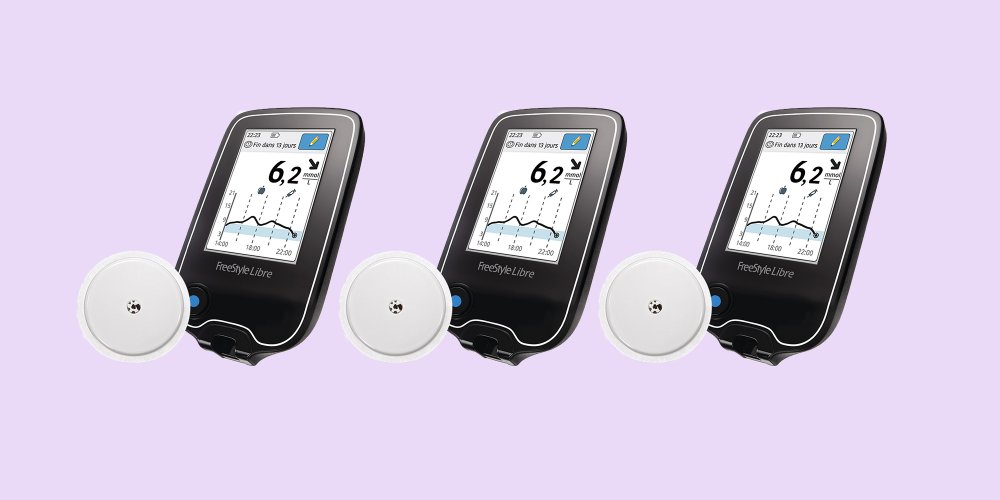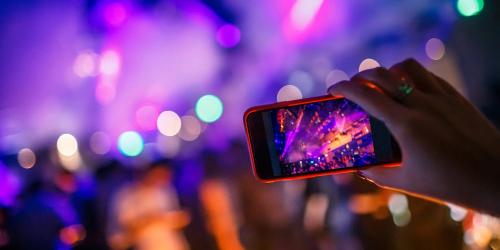32,850: this is, on average, the number of capillary blood glucose that Lucie * did during her 18 years of diabetes. But that was before the arrival of what she sees as a small revolution in the management of her disease: the FreeStyle Free Blood Glucose Sensor.
Before: daily bites to know your sugar level
"The capillary blood glucose - or dextro as we say in the jargon of diabetics - has always been, for my part, the most restrictive part of the treatment.
To take a drop of blood at the end of the finger several times a day is not what is more simple and practical: it is necessary first to wash the hands, to leave all the necessary material, to hide from the eyes ( especially those phobic blood, able to turn the eye in seconds because of you), take the sample, wait for the result, sort the waste, and note the value in a notebook. A real chore, which I confess to have dropped as the years go by.
But without daily blood sugar, impossible to have balanced diabetes.
A few years ago, we began to hear about futuristic devices, worthy of a sci-fi film, able to give us our sugar level without having to get stung. They have been successful in making contactless banking cards so why not contactless blood glucose?
In 2014, our wish is granted by the Abbott laboratory announcing the release of FreeStyle Libre, a continuous glucose sensor. No more lancing devices, lancets and strips. But the joy is of short duration and I am very quickly disappointed by learning that this 'freedom' at a cost: 60 € the machine and 120 € for a month of sensor. In the student era, as much as telling you that it is difficult for me to offer it to me.
It was necessary to wait until June 2017 and its reimbursement by Social Security to finally have it in the hands. My diabetologist then prescribes it to me immediately and schedules a half-day of training at the hospital to learn how to handle it.
The day I go to the pharmacy I feel like celebrate Christmas and my birthday at the same time!
Free Freestyle or non-contact blood glucose
For those who do not know it yet, Free Freestyle is a device that consists of a sensor that measures the glucose level not in the blood but in the interstitial fluid ** and a reader. The sensor, no bigger than a two-euro coin, is composed of a microfilament (and not a needle) that fits under the skin. It is placed at the back of the upper arm using an applicator and changes every 15 days.
Then, in the same way as a scan (or a contactless payment!), I just have to put the reader in front of the sensor for a few seconds to get my sugar level. And it works even if I wear a down jacket or a big coat (practice to go skiing without having to leave a whole kit filled with material). At the time of the meals, I manually return my insulin doses and during the day arrows of 'tendencies' indicate to me if my sugar level is escalating, or on the contrary, to fall.
All blood glucose levels are recorded in history for 8 hours.
All I need to do is connect the player to an application to get all my results as a virtual self-monitoring log or curves. It also calculates the average of my blood glucose and gives me an estimate of my glycated hemoglobin.
Advantages, but still some disadvantages
This is undeniable: free FreeStyle offers greater freedom (it is so aptly named).
In the office or in transport I do not have to hide anymore.
When I find myself in a place or situation where it would be difficult to make a blood glucose, it takes away a lot of stress. I do not have to worry about whether or not I'm having hypoglycemia in the middle of a workout.
Today, I have a better "control" of my diabetes and my glycated hemoglobin has gone from 10.1% to 7.5! It's so simple to have to do a single scan that I sometimes do too much.
But we're not going to lie, FreeStyle does not work miracles either. Like any new technology, it has its limits and constraints.
Having a sensor stuck on the arm (this is the area where we can place it) 24/24 and 7/7 reminds us all the same that the disease is there and level discretion we saw better. I'm not even surprised when my colleagues or friends ask me if I quit because everyone takes it for a nicotine patch! I feel obliged to justify myself by explaining what it is and then arouses curiosity, which sometimes leads to many questions from some.
Not that this disease is a shame, but when you are at a dinner with strangers, that you are challenged on 'this thing on your arm', and that you say to be diabetic, as much to say that it does not There is no better way to 'plomber' a little atmosphere by installing a general discomfort. And then there are days when we do not necessarily want to talk about it. We already think enough about it ourselves, useless that others need to remind us.
On the practical side, you should also know that the sensor can not be in contact with water for more than thirty minutes a day. I love to go to the pool, I can give up the idea of water aerobics classes. I also have to be cautious not to hang it up in my bra strap, a door corner or my boyfriend's watch. 'Incidents' that I faced. And once the sensor is unhooked or corrupted by anything it becomes totally unusable. It must then be paid out of his pocket because only the exact number of sensors needed for a year is reimbursed.
Improvements are still needed, but one thing is certain, I will never come back! "
* the first name has been changed.
** Glucose flows freely from the capillaries to this fluid located between the cells.
*** HbA1c (or glycated hemoglobin) is the average blood sugar level for the 3 months preceding its laboratory dose (expressed as a percentage).




